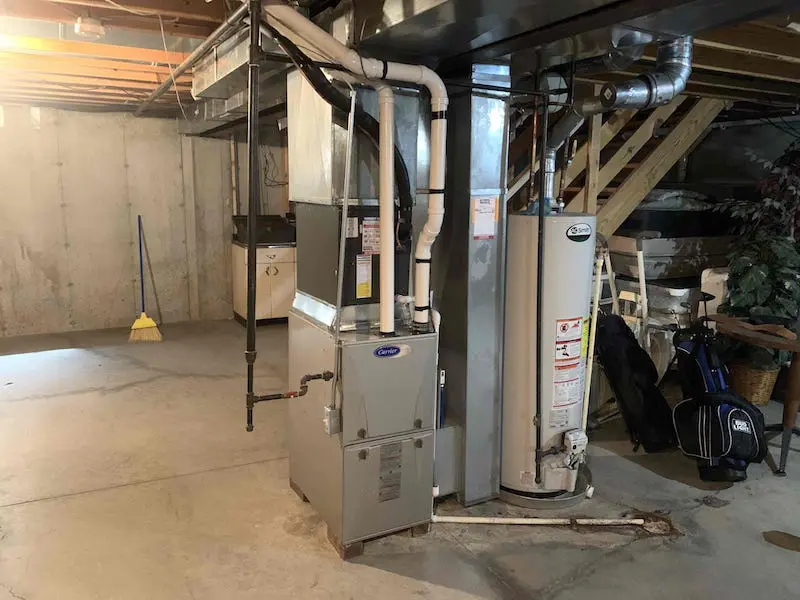The Ultimate Guide to Furnace Installment for a Cozy Home
Heating system installment is a crucial element of maintaining a comfortable home setting, especially throughout the cooler months. Comprehending the different kinds of heaters readily available and the relevance of selecting the appropriate dimension can substantially affect both efficiency and convenience degrees. Additionally, an extensive installment process, matched by the right tools and materials, ensures optimal efficiency. This overview aims to furnish home owners with the understanding required to make enlightened decisions and carry out effective maintenance techniques. As you consider these aspects, the concern continues to be: what actions can you take to guarantee your furnace serves you well for years to find?
Types of Heaters

Gas furnaces are the most typical choice because of their efficiency and reduced functional expenses. They utilize gas or lp, supplying quick heating and constant efficiency, making them optimal for chillier climates.
Electric furnaces, while generally simpler to set up and preserve, have a tendency to have higher functional costs. They are frequently preferred in areas where gas solution is inaccessible or for homes with existing electrical facilities.
Oil heating systems, though less typical today, continue to be a feasible alternative in certain regions. They burn heating oil, which can be advantageous throughout cooler months, but their dependence on oil delivery presents prospective challenges.
In addition, there are high-efficiency versions offered across these types, which can substantially reduce power consumption and energy expenses - furnace installation. Ultimately, understanding these heater types will aid property owners select a system that aligns with their heating requires, budget plan, and power preferences
Picking the Right Dimension
Choosing the suitable size for a heating system is vital to ensuring ideal efficiency and energy effectiveness. An undersized furnace will have a hard time to preserve comfortable temperature levels during the cool months, resulting in boosted wear and tear, greater power costs, and potential system failure. Conversely, an extra-large heating system might cycle on and off too often, leading to inefficient home heating and irregular temperature level circulation within the home.
To establish the correct heating system dimension, an estimation called the Guidebook J lots computation must be carried out. This procedure reviews various elements, consisting of the square footage of the home, insulation degrees, window sizes, and local climate conditions. This comprehensive evaluation guarantees that the heating system satisfies the particular heating needs of the space.

Setup Refine Summary
In regards to products, you will certainly need ductwork, insulation, and sealing tape to make sure optimum air flow and power efficiency - furnace installation. It is likewise vital to have a new heater filter accessible, together with airing vent materials, such as PVC pipe or metal flue, depending upon the sort of furnace being mounted
Safety tools, including gloves, goggles, and a face mask, is also vital to protect versus dust and debris throughout installment. Having all these tools and products conveniently available not only streamlines the procedure but additionally improves the Click Here security and effectiveness of the furnace setup.
Maintenance Tips for Long Life
To make certain the longevity of your furnace, it is important to carry out a regular upkeep routine that addresses key parts of the system. Start by changing or cleansing the air filter every one to three months, as a blocked filter can restrict airflow and lower efficiency. In addition, examine and clean the blower setting up to avoid dust buildup that can prevent efficiency.
Next, check the thermostat settings and alter if required to ensure accurate temperature level law. Examine the ductwork for leakages or obstructions, as this can result in energy loss and uneven heating. Frequently lubricate the electric motor and bearings according to the manufacturer's suggestions to reduce deterioration.
Professional assessments ought to happen every year, where a qualified service technician can evaluate the heating system's overall condition, check for gas leaks, and ensure that safety attributes are functioning appropriately. Take into consideration mounting a programmable thermostat to maximize power use and preserve constant home temperatures. By embracing these maintenance practices, HVAC Portland you can enhance your heating system's efficiency, prolong its life expectancy, and eventually appreciate a comfy and comfortable home setting.
Conclusion
